Leukemia & Lymphoma in Children vs. Adults: What You Need to Know

Home Leukemia and lymphoma are two of the most common types of blood cancers. While they can occur at any age, the way these diseases present and progress in children vs. adults often differs. Understanding these differences is key to early detection and effective treatment. At Healius Cancer & Hematology Clinics, Bangalore, we provide comprehensive care including blood cancer treatment in Bangalore, chemotherapy at economical cost, and radiation therapy in Bangalore to support patients at every stage of their journey. Causes & Risk Factors Though the exact causes of leukemia and lymphoma are not always known, several risk factors have been identified: Genetic predisposition – Family history of blood cancers increases the risk. Weakened immune system – Conditions like HIV or immune-suppressing treatments may lead to higher vulnerability. Environmental exposure – Prolonged exposure to radiation or harmful chemicals can trigger changes in blood cells. Age-related factors – Certain leukemias are more common in children (like acute lymphoblastic leukemia), while others are seen more in adults (like chronic lymphocytic leukemia). Symptoms to Watch For The symptoms may vary in children and adults, but some common warning signs include: Persistent fatigue and weakness – Low red blood cells cause anemia and constant tiredness. Unexplained fever and frequent infections – A weak immune system leads to repeated illness. Swollen lymph nodes or abdomen – Enlarged nodes or spleen can indicate lymphoma or leukemia progression. Easy bruising or bleeding – Platelet deficiency causes nosebleeds, gum bleeding, or unusual bruises. If you notice these symptoms in yourself or your child, seek specialized hematology consultation in Bangalore immediately. Treatment Options at Healius At Healius Cancer & Hematology Clinics, we offer advanced yet affordable treatments tailored for both children and adults: Chemotherapy at economical cost – Targeted medications to destroy cancer cells while minimizing side effects. Radiation therapy in Bangalore – Advanced technology to treat lymphomas effectively and safely. Immunotherapy & Targeted Therapy – Modern approaches to boost the immune system and attack only cancerous cells. Bone Marrow Transplant referrals & support – For cases where intensive treatment is required. Why Choose Healius? Expert Oncologists & Hematologists led by Dr. Mangesh Kamath with vast experience in blood cancer treatment. Affordable care with chemotherapy at economical cost and accessible treatment plans. Personalized approach for children and adults with age-specific treatment protocols. Comprehensive support including nutrition counseling, rehabilitation, and caregiver guidance. At Healius, we combine compassionate care with world-class medical expertise to give patients the best chance of recovery. Contact Us – Begin the Journey of Healing Location: Healius Cancer & Hematology Clinics, Banashankari 2nd stage, BangaloreContact: +91 9900613143 Website: www.healiuscancerhematology.com If you or your loved one is looking for blood cancer treatment in Bangalore, trust Healius for advanced care, affordable treatment options, and expert guidance. Conclusion Early detection and timely treatment save lives. This Leukemia & Lymphoma Awareness Month, let’s spread awareness and give hope to those fighting blood cancers.
Vaccines and Screening for Women’s Cancers

Home The word “cancer” often brings fear. But today, we have vaccines that can help prevent some cancers. One of the most important is the HPV vaccine, which protects against human papillomavirus (HPV) – a common sexually transmitted virus. Nearly 50% of sexually active people are exposed to HPV at some point. While most infections go away on their own, some high-risk types can cause cancers of the cervix, vagina, vulva, anus, penis, and even parts of the throat. 📊 Gynaecological Cancers in India – At a Glance 🧬 Cervical Cancer → ~1,00,000 new cases every year → 50,000–60,000 deaths 🧬 Ovarian Cancer → ~45,000 new cases annually 🧬 Endometrial (Uterine) Cancer → ~20,000+ cases, rising steadily 👉 Most of these cancers are detected late, making prevention and early detection very important. Why Vaccination Matters HPV vaccine prevents most cervical cancers and some other HPV-related cancers. Vaccination at the right age can reduce cervical cancer in India by 85–90%. Research is ongoing for vaccines against ovarian and uterine cancers. HPV Vaccine – A Proven Shield Protects against high-risk HPV strains (16 & 18). Best for girls and boys aged 9–14; can be given up to 26 years (sometimes till 45). Reduces risk of cancers of cervix, vulva, vagina, anus, penis, and throat. Safe, effective, and long-lasting. New Vaccines in Development OvarianVax – BRCA1/2 gene vaccines – for women at high risk of breast and ovarian cancer. Other therapeutic vaccines – p53, HER2, WT1 (target proteins in ovarian/uterine cancers). Still in trial phase, not available in routine practice. Types of Vaccines Type Purpose Examples Status Preventive Stops cancer before it starts HPV vaccines (Gardasil, Cervarix, Cervavac) ✅ Approved & available Therapeutic Helps fight existing cancer BRCA1/2, p53, HER2, WT1 vaccines 🔬 In research 💡 “Your Questions, Answered” 💡 Can married women take HPV vaccine? Yes, up to 26 years (sometimes till 45).💡 Will vaccines cure cancer? No, HPV vaccine prevents infection. Others are in trials.💡 Do vaccinated women still need Pap tests? Yes, because not all risks are covered.💡 Are BRCA vaccines available in India? Not yet – only in research. September is Gynaecological Cancer Awareness Month 🌸 At Healius Cancer and Haematology Clinics, you can: Get a Free Consultation with cancer specialists Do a Pap smear test for early detection Join our HPV Vaccine Drive to protect yourself and your family ✅ Final NoteGynaecological cancers affect lakhs of women in India every year. The HPV vaccine and regular screening are powerful tools to prevent cervical cancer, while new vaccines offer hope for ovarian and uterine cancers. At Healius Cancer and Haematology Clinics, guided by Dr. Mangesh Kamath, women receive world-class, updated treatment and prevention strategies with a strong focus on patient care and awareness.
Chronic Lymphocytic Leukaemia (CLL): The Slow but Manageable Blood Cancer
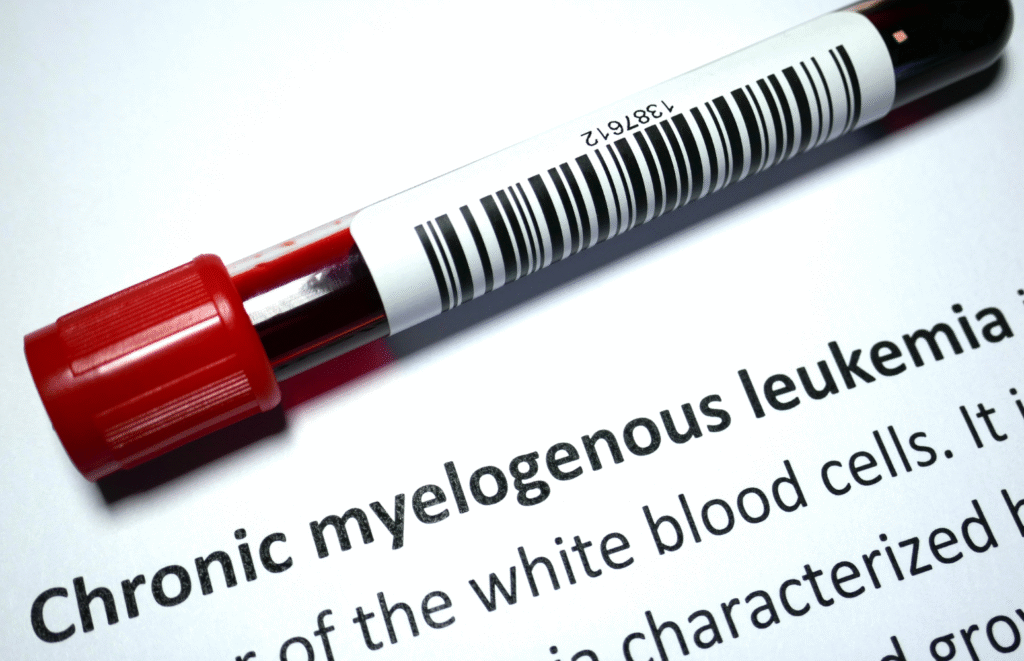
Home Chronic Lymphocytic Leukaemia (CLL): The Slow but Manageable Blood Cancer 🩸 What is CLL?Chronic Lymphocytic Leukaemia (CLL) is a type of blood and bone marrow cancer where the body makes too many abnormal white blood cells called lymphocytes. These cells look normal but do not work properly to fight infections. Over time, they build up in the blood, bone marrow, and lymph nodes, pushing out the healthy cells.Unlike aggressive leukaemia’s like AML or ALL, CLL is slow-growing. Many people live with CLL for years before needing treatment. In fact, some people may never need active therapy and are only monitored. 🌍 How Common is CLL?Globally, CLL is the most common adult leukaemia in Western countries.In India, it is less common compared to acute leukaemia’s (ALL and AML), but the number of cases is slowly increasing as life expectancy improves.CLL usually affects older adults, especially above 60 years.Rarely seen in young people or children.Men are affected more than women. ⚠️ Risk Factors and CausesThe exact cause of CLL is not known. But certain risk factors make it more likely:Older age – common after 55–60 yearsFamily history – risk is higher if a close relative has CLL or another blood cancerGender – men have slightly higher chancesGenetic changes – mutations in TP53, deletion of chromosome 17p, and IGHV gene status are linked to aggressive diseaseEnvironmental exposure – contact with pesticides, fertilisers, and industrial chemicals (studies ongoing)👉 CLL is not contagious and is not caused by lifestyle or diet. 🔍 Common Symptoms of CLLMany patients are diagnosed during a routine blood test without any symptoms. When present, symptoms may include:Swollen lymph nodes in the neck, armpits, or groinFatigue and weaknessFrequent infectionsFever or night sweatsUnexplained weight lossEnlarged spleen or liver (felt as fullness in abdomen)Easy bruising or bleeding (in later stages) 🧪 How is CLL Diagnosed?Blood tests (CBC): Show high lymphocyte count.Flow cytometry: Identifies abnormal lymphocytes.Bone marrow biopsy: Sometimes needed for confirmation.Genetic tests: Detect mutations like del(17p), TP53, and IGHV – important for risk assessment. 🎯 Risk Stratification in CLLCLL does not behave the same way in every patient. Some people live for decades without treatment, while others need immediate therapy. Risk stratification helps doctors decide the best approach.🔹 Risk Stratification Systems in CLL:Rai Staging (USA):Stage 0 → only high lymphocyte count (low risk)Stage I–II → lymph nodes, spleen, or liver enlarged (intermediate risk)Stage III–IV → anaemia or low platelets (high risk)Binet Staging (Europe):Stage A → 3 or fewer lymph node areas involvedStage B → more than 3 lymph node areas involvedStage C → anaemia or low platelets presentGenetic & Molecular Markers:Favourable: Mutated IGHV, normal chromosomesUnfavourable: TP53 mutation, 17p deletion, unmutated IGHVOther factors:Lymphocyte doubling time (LDT): Faster growth = higher riskBeta-2 microglobulin levels: High levels linked to aggressive disease👉 These risk groups guide whether a patient should be on watch & wait, given tablets, or considered for advanced therapies. 💊 Treatment Options for CLL1. Watchful Waiting (Active Surveillance)If no symptoms and blood counts are stable, immediate treatment is not needed.Regular check-ups every 3–6 months.This avoids unnecessary side effects of treatment.2. Targeted TherapyTablets like Ibrutinib, Acalabrutinib, Zanubrutinib (BTK inhibitors) block signals that CLL cells need to grow.Venetoclax helps kill cancer cells by targeting survival proteins.Often better tolerated than chemotherapy.3. Chemo-ImmunotherapyCombination of chemotherapy drugs (Fludarabine, Cyclophosphamide) with monoclonal antibodies (Rituximab).Still used in younger patients with good-risk genetics.4. Monoclonal AntibodiesDrugs like Rituximab, Obinutuzumab, Ofatumumab attach to CLL cells and help the immune system destroy them.5. Stem Cell TransplantRarely done today. Considered for young patients with very high-risk or resistant CLL. 🚀 Recent Advances in CLL TreatmentNext-generation BTK inhibitors (like Acalabrutinib, Zanubrutinib) are safer and more effective.Fixed-duration therapy with Venetoclax + Obinutuzumab offers deep remission without lifelong treatment.Genetic testing is now routine in deciding treatment plans.CAR-T cell therapy is being explored in trials for relapsed CLL. 📊 CLL vs Other Leukaemias – A Simple ComparisonFeatureCLLCMLALLAMLProgressionSlow (chronic)Slow (chronic)Fast (acute)Fast (acute)Typical Age>60 yrs40–60 yrsChildren & young adultsMostly adults, esp. >60 yrsCells InvolvedLymphocytesMyeloid cellsImmature lymphoblastsImmature myeloid cellsSymptomsOften none early; enlarged nodes, fatigueFatigue, splenomegaly, high WBCFever, bleeding, bone painFatigue, bleeding, infectionsTreatmentWatchful waiting, targeted therapy, antibodiesTKIs (Imatinib, etc.), sometimes transplantChemotherapy, targeted therapy, immunotherapyIntensive chemo, transplantCurabilityUsually controlled for years; remission possibleExcellent long-term control with TKIsHigh cure rates, esp. in childrenCurable with aggressive therapy but relapse risk exists 🌈 Living with CLL: A Message of ReassuranceCLL is often called a “chronic” cancer, meaning it can be controlled long-term. Many patients live a normal lifespan, especially with today’s advanced therapies. For many, CLL becomes a condition that is managed like diabetes or hypertension rather than a life-ending disease.Regular follow-up, timely treatment when needed, and support from family and healthcare teams make a huge difference. ❤️ Final Thoughts From Healius Cancer and Haematology ClinicsAt Healius Cancer and Haematology Clinics, we understand the anxiety that comes with a diagnosis of CLL. The good news is that treatment has advanced tremendously—from chemotherapy to highly effective targeted therapies that give excellent quality of life.Under the guidance of Dr. Mangesh Kamath, our team provides:Personalised treatment plans based on your risk profileAccess to the latest targeted medicinesHolistic care including emotional and family support👉 Remember: CLL is not the end. With modern science, it is a journey that can be lived with hope, strength, and dignity.
Breaking Down Chronic Myeloid Leukaemia: Your Guide to Understanding and Beating the Disease

Home Chronic Myeloid Leukaemia, commonly known as CML, is a type of blood cancer that starts in the bone marrow—the soft tissue inside bones where blood cells are made. CML mainly affects a group of white blood cells called myeloid cells, which normally help fight infections. But in CML, these cells grow uncontrollably and do not function as they should.Global and Indian PrevalenceAccording to the GLOBOCAN 2020 data, leukaemia accounts for over 474,000 new cases and 311,000 deaths globally each year. Among these, CML represents about 15–20% of adult leukaemia cases.In India, CML is the most common adult leukaemia, making up around 30–60% of adult cases depending on the region. It is much rarer in children, but when it occurs, it usually behaves more aggressively than in adults. What Causes CML?CML is not inherited. It happens due to a genetic change in the blood-forming cells. Almost all people with CML have a specific genetic abnormality called the Philadelphia chromosome, which creates a faulty gene called BCR-ABL1. This gene tells the body to produce a protein that makes abnormal cells grow too fast.Risk FactorsCML does not usually have clear lifestyle-related risk factors like smoking or diet. However, a few things may slightly increase the risk:Exposure to high doses of radiation (such as during a nuclear accident)Age – It is more common in adults over 50Gender – Men are slightly more affected than womenIt is important to know that for most people, there is no clear reason why they develop CML.Signs and SymptomsIn the early (chronic) phase, many people do not feel sick and are diagnosed during routine blood tests. As the disease progresses, symptoms may appear, such as:Fatigue or weaknessUnexplained weight lossNight sweatsFeverPain or fullness under the ribs (due to an enlarged spleen) How is CML Diagnosed?A Complete Blood Count (CBC) is usually the first clue. If the white blood cell count is abnormally high, further tests like bone marrow biopsy, Philadelphia chromosome testing, or BCR-ABL1 gene testing are done to confirm the diagnosis.Phases of CMLCML progresses in three phases:Chronic Phase – Most patients are diagnosed here. Symptoms are mild or absent.Accelerated Phase – The disease becomes more active, with more abnormal cells.Blast Crisis – The disease behaves like acute leukaemia and is harder to treat. Risk Stratification in CML: Why It MattersWhen someone is diagnosed with CML, doctors do not just look at the blood counts and genes—they also try to estimate how aggressive the disease might be. This process is called risk stratification.What Are the Risk Stratification Scores in CML?Doctors use special scoring systems at the time of diagnosis to estimate how fast the CML may progress. This helps decide the intensity of treatment and monitoring. The most used risk scores include:🔹 Sokal ScoreOne of the oldest and most widely used tools. It considers:Age at diagnosisSize of the spleenPlatelet countPercentage of blast cells (immature white cells) in the bloodPatients are classified into:Low riskIntermediate riskHigh risk🔹 Hasford Score (Euro Score)An update to the Sokal score, it includes:AgeSpleen sizePlatelet countBlast, eosinophil, and basophil percentagesThis score also categorizes patients into low, intermediate, or high risk. 🔹 EUTOS ScoreA simpler model that mainly uses:Spleen sizeBasophil countThis score helps predict early response to treatment, especially in patients receiving tyrosine kinase inhibitors (TKIs).🔹 ELTS Score (EUTOS Long-Term Survival)This newer score focuses on predicting long-term survival, rather than just early response. It includes:AgeSpleen sizePlatelet countBlast percentageIt is currently one of the most preferred risk tools for newly diagnosed CML patients.Why Should You Care About These Scores?While the names and numbers may sound technical, these scores help your doctor:Choose the best drug for your specific risk categoryEstimate how closely you should be monitoredDecide whether more aggressive treatment (like a transplant) might be needed laterMost importantly, they allow your care team to personalize your treatment plan to give you the best possible outcome.Treatment OptionsThanks to medical advances, CML is now considered a manageable chronic condition, especially when diagnosed in the chronic phase.1. Targeted Therapy (TKIs)The mainstay treatment for CML is Tyrosine Kinase Inhibitors (TKIs). These drugs block the BCR-ABL1 protein and stop the cancer from growing. Common TKIs include:ImatinibDasatinibNilotinibBosutinibPonatinibAsciminibMost patients take a TKI as tablets daily, often for life, but some may qualify for treatment-free remission if the disease stays under control for years.2. Bone Marrow or Stem Cell TransplantThis is usually reserved for patients who do not respond to TKIs or are in advanced stages. It is a more intense treatment with potential risks, but it can be curative.3. Chemotherapy or ImmunotherapyTraditional chemotherapy is rarely needed, but interferon-alpha, a type of immunotherapy, was used before TKIs and may still help in selected patients. Newer immunotherapy options are still under research for CML, including CAR T-cell therapy, but are not yet standard treatment.Recent Advances in TreatmentSecond- and third-generation TKIs are now available, offering options if the first drug stops working or causes side effects.Treatment-free remission (TFR) is becoming a reality for some patients. If a person has a deep, sustained response for years, they might be able to stop treatment under close monitoring.Molecular monitoring through PCR tests helps doctors track how well the treatment is working by measuring the level of BCR-ABL1 in the blood. Living with CMLRegular follow-ups are crucial. Blood tests and molecular tests help keep the disease in check.Side effects of TKIs can include fatigue, muscle cramps, and skin rashes—but many people tolerate them well.Mental health support is equally important. Learning to live with a lifelong illness can be emotionally challenging, and talking to a counsellor or support group can help. Can CML Be Prevented?Unfortunately, since the exact cause of CML is unknown in most cases, there are no proven preventive measures. However:Avoiding unnecessary radiation exposurePrompt health check-ups for symptomscan help in early detection and timely treatment. Final ThoughtsAt Healius Cancer and Haematology Clinics, we understand that a diagnosis of Chronic Myeloid Leukaemia (CML) can be overwhelming—not just for the patient, but for the entire family. But the good news is that CML is one of the most successfully treated forms of leukaemia today.
Acute Myeloid Leukaemia: Understanding the Disease of the Blood
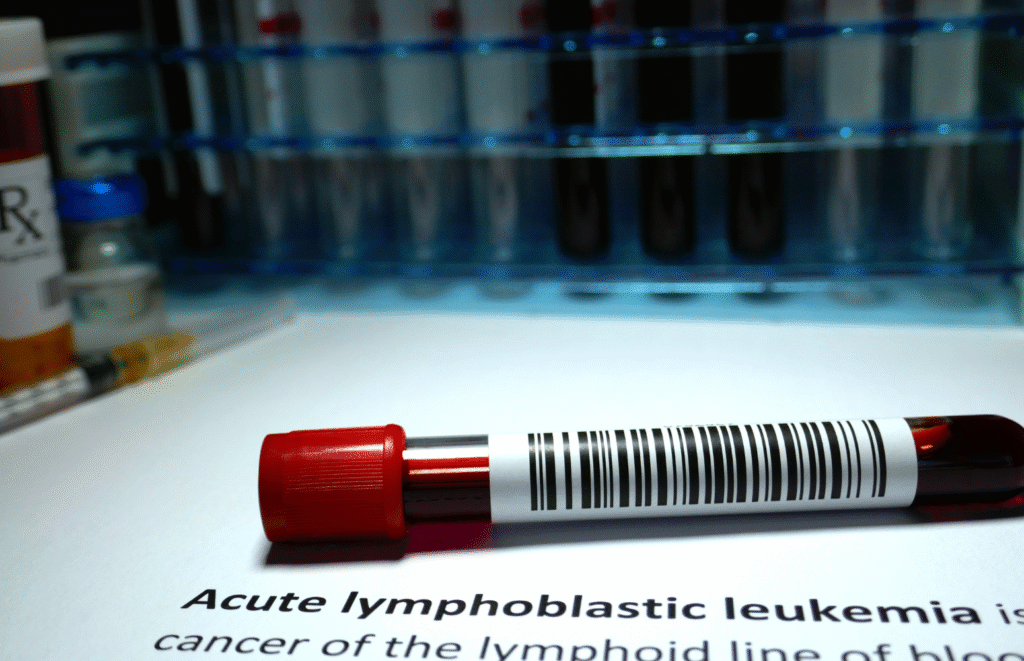
Home Among the body fluids blood plays a major role in vital functioning of our body. It carries oxygen, nutrients to all organs and acts as a scavenger by carrying waste products to respective organs for further processing where they are removed from the body. The blood consists of four main components which are red blood cells, white blood cells, platelets, and plasma. These components are produced in the bone marrow which is the spongy tissue inside your bones. The myeloid stem cells originated from the bone marrow further differentiates into white blood cells, red cells, and platelets. When there is abnormal or uncontrolled production of these undifferentiated myeloid cells (called myeloblast) cause fast growing cancer of the bone marrow and blood known as Acute Myeloid Leukaemia. What Causes Acute Myeloid Leukaemia (AML)? AML is caused due to the changes that occur in our genes in the DNA of the Myeloid cells. Yet it is still unknown as to what triggers the change. However, there are few risk factors that increases the risk of AML which includes:Older Age – Acute myelogenous leukaemia is most common in adults age 65 and older.Gender – Global data shows men have about a 1.5 times higher risk of developing AML as compared to women. This could be due to higher exposure to like smoking, industrial chemicals and radiation in male dominated jobs and hormonal differences.Genetic Changes: Some people are born with gene mutations that make them more likely to develop AML later in life. Other mutations happen over time due to aging or environmental exposures. Previous Cancer Treatments: Chemotherapy and radiation, while life-saving, can sometimes damage bone marrow cells and trigger AML years later. Chemical Exposure: Long-term contact with chemicals like benzene (found in gasoline and industrial solvents) has been linked to AML. Blood Disorders: Conditions like myelodysplastic syndrome (MDS) can turn into AML if not treated early. Family History: Rare genetic conditions like Down syndrome increase AML risk. How Common Is AML? (Global & Indian Statistics)AML is more common in older adults, with most cases diagnosed after age 65. According to GLOBOCAN 2022 (a global cancer database): Worldwide: About 119,000 people are diagnosed with AML each year, and sadly, around 95,000 die from it. The survival rate is around 30% for adults, but younger patients often do better. In India: Roughly 6,000 to 8,000 new AML cases occur yearly. Many patients face delays in diagnosis due to lack of awareness, limited access to advanced tests, and high treatment costs. What Are the Symptoms of AML? Since AML affects blood cell production, symptoms often include: Extreme tiredness and weakness (due to low red blood cells). Frequent infections (because of a shortage of healthy white blood cells). Easy bruising or bleeding (such as nosebleeds or gum bleeding, due to low platelets). Bone pain (as leukemia cells build up in the marrow). Fever, night sweats, and unexplained weight loss.These symptoms can appear suddenly and worsen quickly, so seeing a doctor early is crucial. How Do Doctors Determine the Severity of AML? (Risk Stratification)Not all AML cases are the same—some are more aggressive than others. Doctors classify AML into low, intermediate, and high-risk categories based on: Genetic Testing: Certain gene changes (like FLT3 or NPM1 mutations) help predict how well treatment will work. Age & Overall Health: Younger, fitter patients usually respond better to strong chemotherapy. Response to Initial Treatment: If cancer cells disappear after the first round of chemo, chances of long-term survival improve. Why Does Risk Stratification Matter?Low-risk AML may be cured with chemotherapy alone. Intermediate-risk AML might need chemotherapy followed by a stem cell transplant. High-risk AML often requires stronger treatments, like targeted therapy or clinical trials. This personalized approach helps doctors choose the best treatment while avoiding unnecessary side effects. What Are the Treatment Options for AML?1. ChemotherapyThe standard first treatment is “7+3” chemotherapy—a combination of two drugs given over 7 days. This kills leukaemia cells but also affects healthy cells, causing side effects like hair loss, nausea, and low blood counts. 2. Targeted Therapy Newer drugs specifically attack cancer cells without harming normal cells as much. Examples include: FLT3 inhibitors (Gilteritinib, Midostaurin) for patients with FLT3 mutations. IDH inhibitors (Ivosidenib) for those with IDH1/2 mutations. 3. Stem Cell TransplantFor high-risk patients, a bone marrow transplant (from a donor) may be the best chance for a cure. However, it is a complex procedure with risks like infections and graft-versus-host disease (where donor cells attack the body). 4. Supportive Care Since AML weakens the immune system, patients often need: Blood transfusions (to replace red cells and platelets). Antibiotics (to prevent infections). Pain management (for bone pain). 5. Special Case: APL (A Highly Curable Subtype) A rare form of AML called acute promyelocytic leukemia (APL) is treated differently—with vitamin A-based drugs (ATRA) and arsenic trioxide, leading to cure rates above 90%. Hope for the Future While AML remains a serious disease, advances in genetic testing, targeted therapies, and immunotherapy are improving survival rates. Early diagnosis and access to specialized care are critical—especially in countries like India, where awareness and healthcare access vary widely. If you or a loved one experience persistent fatigue, infections, or unusual bleeding, consult a doctor promptly. With the right treatment, many AML patients can achieve remission and lead fulfilling lives.
Head and Neck Cancer
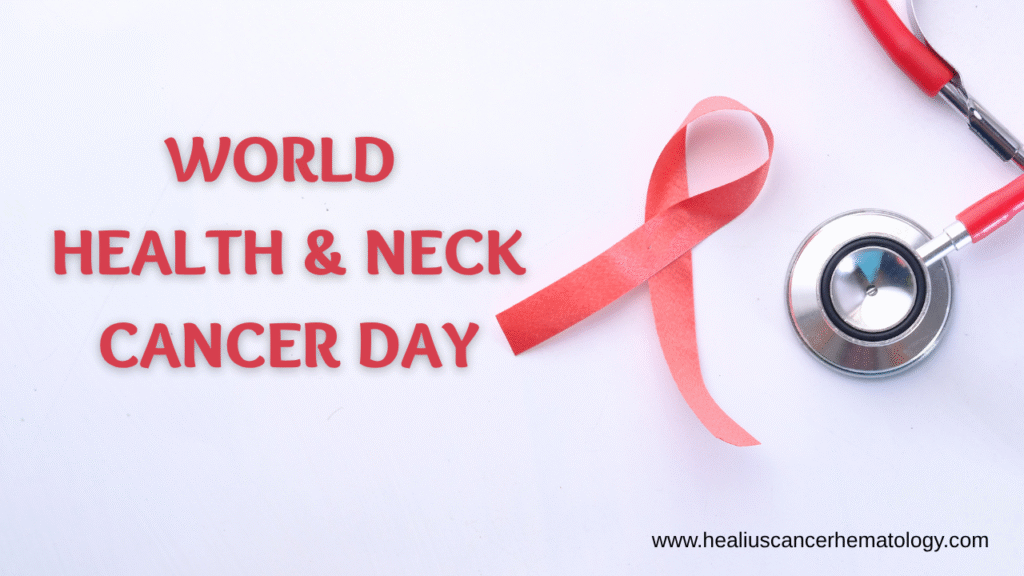
Home Head and neck cancer refers to a diverse group of malignant tumors that develop in or around the throat, larynx, nose, sinuses, and mouth. It is one of the most common types of cancer in India, and with early detection and the right treatment, it can be effectively managed. This comprehensive guide will help you understand the symptoms, causes, treatment options, and how Healius Cancer & Hematology Clinics, under the leadership of Dr. Mangesh Kamath, offer the best care for head and neck cancer in Bangalore. Head and neck cancers usually originate in the squamous cells that line the moist mucosal surfaces inside the head and neck, such as the mouth, nose, and throat. These are collectively called squamous cell carcinomas. Less commonly, cancer can form in the salivary glands, lymph nodes, or other structures in the head and neck region. Understanding Head and Neck Cancer These cancers are categorized based on the region they affect: Oral Cavity Cancer: Includes lips, front two-thirds of the tongue, gums, lining of the cheeks and lips. Pharyngeal Cancer: Includes the nasopharynx, oropharynx, and hypopharynx. Laryngeal Cancer: Involves the voice box.Nasal Cavity and Paranasal Sinus Cancer Salivary Gland Cancer Symptoms of Head and Neck Cancer Early detection is vital. The symptoms vary depending on the cancer’s location but may include: Persistent sore throatLump or sore that doesn’t heal Difficulty or pain during swallowing Hoarseness or voice changes Ear pain or fullness Nasal obstruction or bleeding Swelling in the neck or jaw Numbness in the face Unexplained weight loss If these symptoms persist for more than two weeks, it is critical to seek medical attention. Causes and Risk Factors Several factors increase the risk of developing head and neck cancer: Tobacco and Alcohol Use: The most significant risk factors. Smoking and chewing tobacco, combined with heavy alcohol consumption, multiply the risk. HPV Infection: Human papillomavirus, especially HPV-16, is strongly associated with oropharyngeal cancers.Poor Oral Hygiene and Dental Care: Chronic irritation from poor dental health or ill-fitting dentures can contribute. Exposure to Chemicals: Asbestos, wood dust, paint fumes, and industrial toxins are linked to increased risks. Gastroesophageal Reflux Disease (GERD): Chronic acid reflux can irritate the throat and larynx, increasing cancer risk. Family History: A genetic predisposition can play a role. Diagnosis of Head and Neck Cancer Accurate diagnosis is the cornerstone of effective treatment. At Healius Cancer & Hematology Clinics, we use a combination of modern diagnostic tools: Physical Examination Endoscopy: Visual examination of affected areas using a thin, flexible tube. Biopsy: A tissue sample is collected and analyzed. Imaging Tests: CT Scan MRI PET Scan X-rays HPV Testing: Especially in oropharyngeal cancers Meet Dr. Mangesh Kamath: A Leader in Cancer Treatment Dr. Mangesh Kamath is a seasoned and compassionate medical oncologist with extensive experience in treating complex cancer cases, including head and neck, lung, breast, ovary, stomach, colorectal, lymphoma, and myeloma. He is known for his patient-centric approach, in-depth knowledge, and commitment to offering the latest treatment modalities. Patients from across Karnataka and beyond seek his guidance at Healius Cancer & Hematology Clinics, one of the best cancer treatment centers in Bangalore. Treatment Options for Head and Neck Cancer Treatment depends on the cancer’s location, stage, and the patient’s overall health. At Healius, we offer: Surgery: The primary treatment for early-stage tumors. Our expert surgeons remove the tumor while preserving critical functions like speech and swallowing. Radiation Therapy: High-energy beams are used to destroy cancer cells. It can be the main treatment or combined with surgery and chemotherapy. Chemotherapy: Powerful drugs are used to kill cancer cells. Often used in combination with radiation for advanced cancers. Targeted Therapy: Drugs that specifically target cancer cell mechanisms. Hormonal Therapy: In specific cases, hormone receptor-positive cancers are treated using hormone-blocking therapies. Immunotherapy: Boosts the body’s immune system to fight cancer. It is a growing area in head and neck cancer management. Multidisciplinary Approach at Healius Our head and neck cancer treatment involves collaboration among: Surgical Oncologists Medical Oncologists Radiation Oncologists Speech Therapists Nutritionists Psychologists This holistic approach ensures comprehensive care and better outcomes. Patient-Centric Care What sets Healius Cancer & Hematology Clinics apart is our focus on: Affordability: We provide transparent pricing and accept insurance plans, including Ayushman Bharat and CGHS. Daycare Chemotherapy: Minimizing hospital stays and improving comfort. Advanced Infrastructure: Modern operation theatres, diagnostic labs, and pharmacy. Support Services: Including pain management, palliative care, counseling, and rehabilitation. Prevention Tips and Awareness Quit Tobacco and Alcohol Practice Safe Oral Hygiene Get Vaccinated Against HPV Wear Protective Gear if exposed to industrial toxins Regular Dental and ENT Checkups Success Stories and Testimonials Patients treated for head and neck cancer at Healius have experienced remarkable recoveries. Many have returned to normal life, thanks to timely intervention and personalized care. Here’s what one of our patients shared: “I was scared when I first got diagnosed with tongue cancer. But under Dr. Mangesh Kamath’s guidance, the journey was full of hope. The entire team at Healius treated me with utmost care and professionalism. I’m now cancer-free and living life to the fullest.” Integration with Other Cancer Care At Healius, we don’t just specialize in head and neck cancer. Our expertise extends to: Lung cancer Breast cancer Ovarian cancer Stomach cancer Colorectal cancer Lymphoma Myeloma This cross-functional expertise ensures we understand metastatic behavior and secondary tumor formation that may involve multiple body parts. When to See a Specialist If you have symptoms like persistent mouth sores, voice changes, or neck swelling, it’s crucial not to ignore them. Early diagnosis increases the chances of complete recovery. Dr. Mangesh Kamath is available for consultation at Healius Cancer & Hematology Clinics in Bangalore. Book Your Consultation Don’t wait until it’s too late. If you or a loved one is experiencing any symptoms of head and neck cancer or seeking a second opinion, reach out to us: Phone: +91 99006 13143Website: healiuscancerhematology.comLocation: KR Road, Bangalore Conclusion Head and neck cancers are serious but treatable diseases, especially when caught early and managed with a strategic,
Acute Lymphoblastic Leukemia (ALL): A Comprehensive Guide for Patients and Caregivers

Home Introduction: Understanding ALL Acute Lymphoblastic Leukaemia (ALL), also called acute lymphocytic leukaemia, is a rapidly progressing cancer of the blood and bone marrow. It affects the lymphoid lineage of white blood cells, particularly immature lymphoblasts. These abnormal cells multiply uncontrollably, crowding out normal blood cells and impairing immune function. ALL primarily occurs in children but also affects adults, with varying treatment responses and outcomes between age groups. Prevalence and Global Burden According to the GLOBOCAN 2022 estimates: Worldwide incidence: ~64,000 new ALL cases annually Children: ALL is the most common paediatric cancer, accounting for about 75–80% of all childhood leukaemia cases, with peak incidence between ages 2 and 5. Adults: Less common but more aggressive, representing ~20% of adult leukaemia cases, with poorer prognosis compared to paediatric ALL. In India, ALL contributes significantly to childhood cancer burden. The ICMR-NCDIR data shows an annual incidence of 4–5 cases per 100,000 children, with improving survival rates in urban centres due to better access to specialized care. How Does ALL Develop? ALL begins in the bone marrow, where early lymphoid progenitor cells (typically B or T cell lineage) undergo genetic mutations, disrupting normal differentiation and triggering uncontrolled proliferation. As these immature lymphoblasts multiply, they spill into the bloodstream and infiltrate organs like the liver, spleen, and central nervous system (CNS), causing systemic symptoms and complications. Causes and Risk Factors The exact cause is often unknown, but multiple factors can contribute: Genetic predisposition: Down syndrome, Li-Fraumeni syndrome, and other hereditary syndromes Prenatal chromosomal changes: Like TEL-AML1 fusion Radiation or chemical exposure: High-dose radiation or previous chemotherapy Infections and immune system factors: Delayed infections during childhood might alter immune regulation Family history: Siblings with ALL carry a slightly increased risk Genomic Landscape of ALL ALL is a genomically diverse disease, and molecular subtyping is critical for personalized treatment. Key genetic abnormalities include: 🔹 B-Cell ALL Genomics Hyperdiploidy: >50 chromosomes in cells; good prognosis in children ETV6-RUNX1 fusion: Favourable outcome Ph-positive (BCR-ABL1): Common in adults; poor prognosis unless treated with tyrosine kinase inhibitors (TKIs) Ph-like ALL: BCR-ABL1-like gene expression with kinase-activating lesions; high-risk 🔹 T-Cell ALL Genomics NOTCH1 mutations: Common, often targetableTAL1, LMO1/2 alterationsEarly T-precursor (ETP) ALL: Aggressive subtype with high relapse risk Comprehensive genomic profiling (e.g., using next-generation sequencing, FISH, PCR) guides risk stratification and targeted therapy selection. Symptoms of ALL Symptoms are often non-specific and may mimic common infections: Fatigue, pallor (due to anaemia) Fever, frequent infections (due to neutropenia) Easy bruising, bleeding (from low platelets) Bone or joint pain Swollen lymph nodes, liver, or spleen CNS symptoms (in advanced cases): headache, vomiting, visual changes Diagnosis Accurate diagnosis involves: Complete blood count (CBC): Shows blasts, anaemia, and low platelets Peripheral smear and bone marrow aspiration/biopsy: Confirm diagnosis and estimate blast percentage Immunophenotyping (flow cytometry): Classifies B vs T cell ALL Cytogenetics and molecular tests: Identify high-risk genetic features Lumbar puncture: Checks for CNS involvement Treatment Approaches Treatment for ALL is intensive and often spans 2–3 years, especially in children. Chemotherapy Induction phase: Eliminates most leukemic cells (first 4–6 weeks) Consolidation: Prevents regrowth using high-dose chemo Maintenance: Low-intensity therapy over 1–2 years Drugs include vincristine, corticosteroids, L-asparaginase, anthracyclines, methotrexate, cytarabineTargeted Therapy Imatinib, Dasatinib: For BCR-ABL1 (Ph-positive) ALL Ruxolitinib: In Ph-like ALL with JAK mutations Venetoclax: Investigated in relapsed cases NOTCH1 pathway inhibitors: In T-cell ALL (clinical trials) Immunotherapy Blinatumomab: BiTE antibody that links CD3 (T-cells) and CD19 (B-cells) Inotuzumab ozogamicin: Anti-CD22 antibody-drug conjugate CAR T-cell therapy (e.g., tisagenlecleucel): For relapsed/refractory B-cell ALL in children and young adults Stem Cell Transplant (HSCT) Recommended for high-risk patients or those who relapse. Best outcomes when done in first remission with a matched donor. Recent Advances Minimal Residual Disease (MRD) monitoring using flow cytometry or PCR helps detect low levels of leukaemia post-treatmentGenomics-guided therapy: Enables better risk-adapted treatmentShorter, more effective chemo protocols: Especially in paediatric ALLNew trials: Combining targeted therapy with standard chemo for improved outcomes Prevention and Lifestyle During & After Treatment Though ALL can’t be fully prevented, minimizing risk factors (e.g., radiation exposure, healthy pregnancy) is beneficial. During treatment: Eat a neutropenic-safe diet: well-cooked food, avoid raw meats Hydrate well and manage nausea, mucositis, and constipation Maintain good oral hygiene Prevent infections: regular handwashing, avoid crowds Vaccinations may be paused temporarily Gentle exercise and physical therapy to reduce fatigue After treatment: Annual follow-ups with bone marrow and MRD tests Monitor for late effects: cardiac toxicity, infertility, secondary cancers Balanced diet rich in protein, iron, and antioxidants Emotional recovery and school/work reintegration support Psychological and Emotional Impact Living with or caring for someone with ALL can be emotionally taxing. Children especially need a strong support system to cope with: Fear of relapse Isolation during long hospital stays Anxiety around chemotherapy and side effects Academic or social setbacks Support options include: Paediatric psycho-oncologists Family counselling and caregiver support groups Art/music/play therapy Survivorship programs Conclusion: Hope with Healing At Healius Cancer and Haematology Clinics, under the expert guidance of Dr. Mangesh Kamath and his team, we emphasize personalized, evidence-based care for ALL patients—tailoring treatment to each patient’s genetic profile, age, and risk status. With significant advancements in therapy, especially for children, survival rates have dramatically improved, and the future of ALL treatment continues to get brighter. Remember: Early diagnosis, genomic testing, adherence to treatment, and emotional support are the cornerstones of overcoming ALL.
Understanding Glioblastoma: Challenges, Treatment Advances, and the Road Ahead
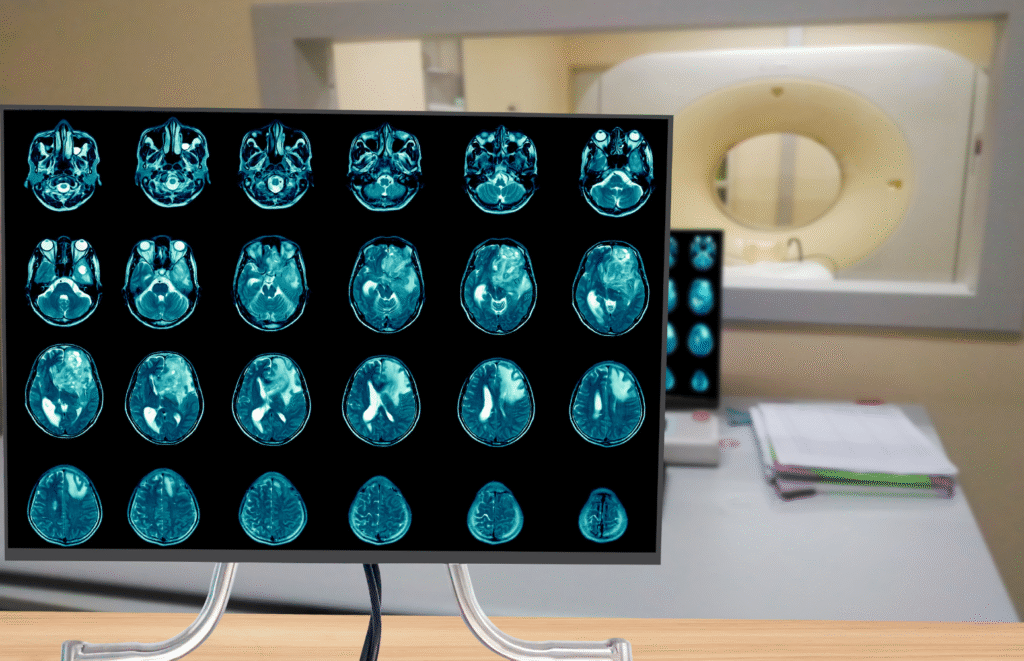
Home At Healius Cancer & Hematology Clinics, we believe that every patient deserves global-standard care—right here at home. Here’s how we are making that possible: Multidisciplinary Neuro-Oncology Team Our team includes oncologists, neurosurgeons, radiologists, pathologists, and palliative care specialists who work together to design personalized treatment plans. Access to Precision Medicine We offer molecular tumor profiling to identify genetic mutations and match patients with targeted therapy or clinical trials where applicable. Advanced Diagnostics Healius provides access to high-resolution MRI, PET-CT, and biopsy with histopathology, enabling accurate diagnosis and monitoring. Patient-Centered Support We go beyond medical treatment with support services like: Psychological counseling Nutrition planning Caregiver guidance Rehabilitation and follow-up care Looking Ahead: Hope Through Research and Compassionate Care While glioblastoma remains one of the most difficult cancers to treat, innovation, early diagnosis, and integrative care are key to improving outcomes. We remain dedicated to bridging the gap between global advances and accessible, affordable cancer care in Bangalore. If You or a Loved One is Facing a Brain Tumor Diagnosis Reach out to Healius Cancer & Hematology Clinics for expert consultation, second opinions, and access to advanced glioblastoma care. 📞 Call us today : +91 9900613143 Or🌐 Visit: www.drmangeshkamath.com to book your appointment.
Understanding Sarcoma: A Rare but Treatable Cancer – With Expert Care at Healius Cancer and Haematology Clinics
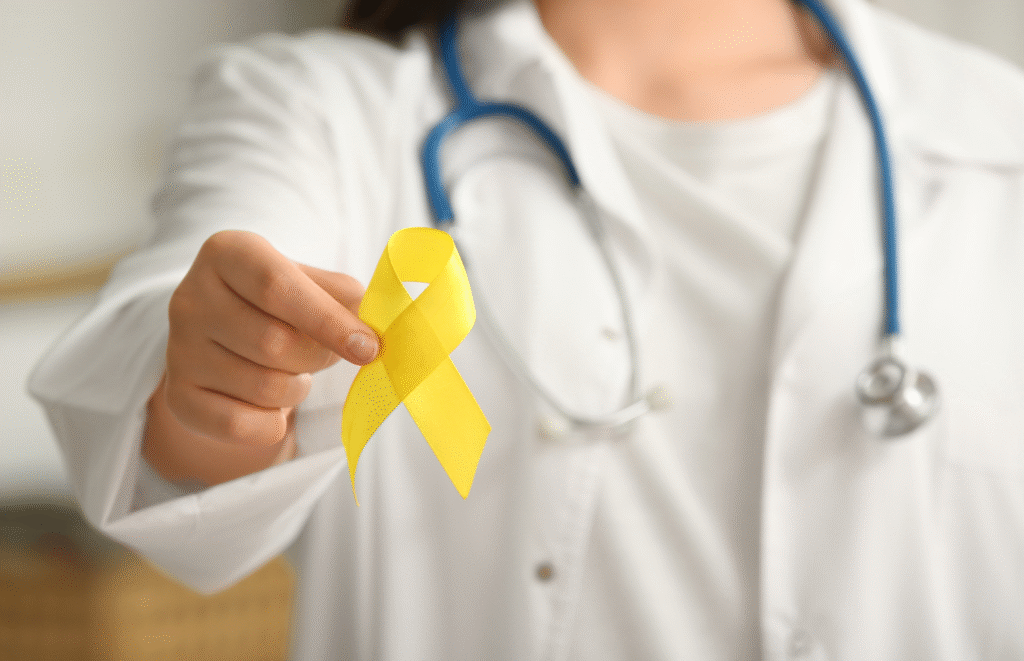
Home Sarcoma is a rare group of cancers that begin in the bones or soft tissues such as fat, muscle, nerves, blood vessels, or connective tissues. Unlike more common cancers, sarcomas can occur anywhere in the body and are known for their diverse subtypes. They are broadly classified into bone sarcomas (like osteosarcoma and Ewing’s sarcoma) and soft tissue sarcomas (such as liposarcoma, leiomyosarcoma, and synovial sarcoma). 📊 Prevalence in India Sarcomas account for less than 1% of all adult cancers and around 15% of all childhood cancers. In India, the burden is slowly being recognized, particularly among the paediatric and young adult population. Due to their rarity, sarcomas are often misdiagnosed or diagnosed late, making expert multidisciplinary care crucial. 🧬 Causes and Hereditary Factors While the exact cause of sarcoma remains unknown in most cases, several risk factors have been identified: Genetic syndromes like Li-Fraumeni syndrome, Neurofibromatosis type 1, and hereditary retinoblastoma increase the risk. Radiation exposure from prior cancer treatment. Certain chemical exposures and chronic swelling (lymphedema). Some cases emerge without any known risk factors. 👶 Impact on Children Sarcomas like rhabdomyosarcoma and Ewing’s sarcoma are among the most common childhood cancers. These diagnoses can deeply affect the child’s physical growth, emotional development, and social interactions, making compassionate and comprehensive care essential. 👶 Impact on Children – Special Focus on Neural-Origin Sarcomas Sarcomas such as rhabdomyosarcoma, Ewing’s sarcoma, and osteosarcoma are among the most common in children. However, a smaller subset of paediatric sarcomas arises from the neural tissue, such as Malignant Peripheral Nerve Sheath Tumours (MPNST). These neural-origin sarcomas are often linked to genetic conditions like Neurofibromatosis type 1 (NF1) and may present as rapidly enlarging, deep-seated, and painful masses. Their aggressive behavior and potential to affect vital nerve structures make early diagnosis and expert management crucial. At Healius Cancer and Haematology Clinics, children with such rare tumours receive specialized, age-appropriate care under the guidance of Dr. Mangesh Kamath, with a focus on: Preserving neurological function Ensuring optimal tumour control Supporting the child’s psychological and developmental health Our team works closely with paediatric surgeons, neurologists, psychologists, and rehabilitation experts to deliver holistic care and improve long-term quality of life. 💊 Treatment Options at Healius Cancer and Haematology Clinics Under the expert guidance of Dr. Mangesh Kamath, a renowned medical oncologist, sarcoma patients at Healius receive personalized and evidence-based treatment plans that may include: Surgery to remove the tumor with maximum tissue preservation Radiation therapy for local control, especially when surgery isn’t feasible Chemotherapy for aggressive or metastatic disease Targeted therapy and immunotherapy in select cases based on genetic profiling Each patient benefits from a multidisciplinary tumor board discussion, ensuring optimal treatment planning and sequencing. ❤️🩹 Coping With Treatment and Beyond Sarcoma treatment can be intense and long-term, affecting both the patient and their family. At Healius, our holistic approach includes: Psychological counseling and emotional support Nutritional guidance to aid recovery and manage treatment side effects Physiotherapy and rehabilitation to restore function and mobility Survivorship care plans for long-term monitoring and quality of life We walk hand-in-hand with caregivers, providing education, support groups, and respite care resources. 🏥 Why Choose Healius Cancer and Haematology Clinics? At Healius, we believe every sarcoma patient deserves precision medicine with a human touch. Under the leadership of Dr. Mangesh Kamath, we combine advanced oncology with compassionate care. From diagnosis to survivorship, we ensure that no patient feels alone in their journey. Healius – where expertise meets empathy.
Exercise & Cancer Recovery: How Physical Activity Can Lower Recurrence and Improve Quality of Life
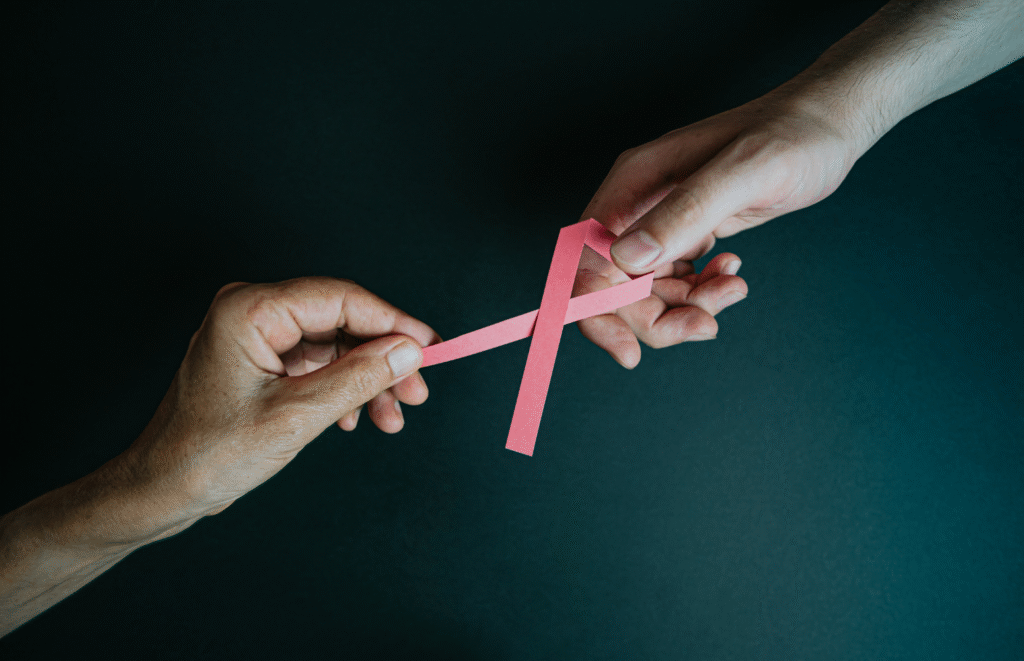
Home When it comes to cancer recovery and prevention, most patients focus on treatments such as chemotherapy, radiation, or surgery. However, emerging research and clinical insights are now highlighting another powerful ally in the fight against cancer — exercise. Dr. Mangesh P Kamath, Senior Consultant at Healius Cancer & Hematology Clinics, one of the leading cancer hospitals in Bangalore, emphasizes the role of regular physical activity in reducing the risk of cancer recurrence and improving survival outcomes. “Exercise can be done in different levels: low, moderate, and high intensity,” says Dr. Kamath. “Since it can be difficult for patients to do high-intensity exercises during or after cancer treatment, moderate exercises like brisk walking or sports like badminton are recommended.” According to studies and clinical experience, moderate physical activity can reduce the risk of cancer recurrence by nearly 30%. Moreover, more than one-third of patients showed a significantly lower risk of death when they incorporated exercise into their post-treatment lifestyle. More Than Just Colon Cancer While the benefits of exercise in preventing the recurrence of colon cancer are well known, Dr. Mangesh Kamath highlights that regular physical activity also plays a preventive role in other cancers such as breast cancer and lung cancer. “Not just colon cancer, exercise can also help prevent the risk of occurrence of many cancers, such as breast and lung cancer, increasing the overall quality of life,” he adds. Why Healius Emphasizes Holistic Cancer Care At Healius Cancer & Hematology Clinics, patient care goes beyond just medication. The team of expert oncologists and specialists believes in a holistic approach to cancer treatment — integrating physical well-being, emotional support, and long-term lifestyle management. Whether you’re undergoing active treatment or are in remission, our experts at Healius will guide you through safe, customized fitness plans that support your recovery journey. Your Next Step Towards Recovery If you or a loved one is navigating through cancer, it’s important to not only rely on medical treatments but also embrace lifestyle changes that improve outcomes. Exercise is one of the most accessible yet powerful tools you can use. For expert guidance and compassionate care, visit Healius Cancer & Hematology Clinics, a trusted cancer hospital in Bangalore offering evidence-based, patient-centered cancer treatment. Book a consultation with Dr. Mangesh P Kamath and take a step toward recovery with confidence. 📍 Healius Cancer & Hematology Clinics | Bangalore🌐www.drmangeshkamath.com📞 Call us today to know more! +91 9900613143
